Cedar – Sacred Tree With Medicine Power In Native American Beliefs
A. Sutherland - AncientPages.com - Cedar is considered the most sacred tree in Native American beliefs.
Cedar holds significant importance in Native American traditions as a ceremonial plant. Numerous tribes utilize cedar for its aromatic properties as incense and for its purifying qualities.
The plant plays a crucial role in various aspects of Native American spiritual and medicinal practices. Specifically, cedar is closely linked to prayer rituals, healing ceremonies, and the realm of dreams. Additionally, it is believed to offer protection against illnesses.
This versatile plant's widespread use across different tribes underscores its cultural and spiritual significance in Native American communities.
According to the Navajo, it was the first tree planted by man in the Third World to save people from a flood (Dineh). In other beliefs, this tree had medicinal power and represented the Southern direction in the Medicine Wheel. Thanks to its other unique properties, Cedar was widely used by Native tribes in rituals.
Speaking the Algonquian language, the Fox tribe of Native Americans, also known as the Mesquakie (Meskwaki), believed that the spirits of their ancestors lived in trees such as Cedar and the trees’ murmuring in the wind was the ancestors’ voices.
The Lakota, part of the Sioux Nation, burned cedar leaves as incense in ceremonies for Wakinyan, the Thunderbird. The Lakota’ say that burning Flat Cedar attracts good spirits, removes negative influences, and thus, purifies a space.
Known as hanté blaska to the Lakota, flat Cedar is a sacred herb often used in ceremony and during times of prayer, and an ancient legend confirms that this dried herb is also a favorite of enigmatic Thunder Beings (Wakinyan)
In “Lakota Belief And Ritual,” James R. Walker, a physician to the Pine Ridge Sioux from 1896 to 1914, writes:
“If a Lakota is doing a ceremony relative to Wakinyan (Thunder Being), he should make an incense of the leaves of the cedar tree. This is because the cedar tree is Wakinyan's favorite, and he never strikes it with lightning. The smell of the smoke of the Cedar is pleasing to him…”
The Seminole - a Native American people from Florida - believed that burning cedar leaves cleansed a home of evil intentions. In the Navajo (Dineh) emergence story, First Man-made attempts to save the people in the Third World from a flood, so he planted a cedar tree that they could climb to reach the Fourth World.
Unfortunately, the cedar tree was not tall enough. The Pawnee, a Plains Indian tribe headquartered in Pawnee, Oklahoma, and the Arapaho people from the plains of Wyoming and Colorado say that Mother Corn taught the people how to cultivate corn, and then she became a cedar tree.
But how did this magnificent sacred tree get its red color?
The Cherokee and the Coyaha people (also known as the Yuchi, a Native American tribe traditionally inhabited the eastern Tennessee River valley in 16th century Tennessee, answer this question through their beliefs.
A wicked magician once caused great harm until two brave warriors found and killed him, their story tells. To kill the head, they were told to tie it to the upper branches of a tree. They tried to use many different trees but in vain. They cut off his head and carried it home, but it remained alive. Finally, there was only one tree left. It was a cedar, so they tied the head to it and killed it. The blood that trickled down the tree’s trunk gave the cedar wood its unique red color.
The cedar tree holds significant cultural importance among numerous Salish tribes, indigenous peoples of the American and Canadian Pacific Northwest.
These communities widely recognize it as a symbol of generosity and providence. Notably, these tribes have developed specific rituals associated with the felling of cedar trees, underscoring the tree's revered status. Cedar plays a crucial role in various traditional practices. It is a common element in sweat lodge ceremonies, which are important purification rituals.
Additionally, cedar is frequently incorporated into medicine bundles and amulets, highlighting its perceived protective and healing properties. These uses demonstrate the multifaceted significance of cedar in Salish cultural and spiritual traditions.
Written by – A. Sutherland AncientPages.com Staff Writer
First version of this article was published on January 6, 2018
Copyright © AncientPages.com All rights reserved. This material may not be published, broadcast, rewritten or redistributed in whole or part without the express written permission of AncientPages.com
More From Ancient Pages
-
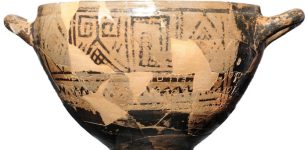 Mystery Of The Tomb Of Nestor’s Cup Unraveled
Archaeology | Oct 6, 2021
Mystery Of The Tomb Of Nestor’s Cup Unraveled
Archaeology | Oct 6, 2021 -
 Easter Island Holds Clues To The Disappearance Of People On The ‘Mystery Islands’
Archaeology | May 14, 2021
Easter Island Holds Clues To The Disappearance Of People On The ‘Mystery Islands’
Archaeology | May 14, 2021 -
 Hadrian’s Wall: North-West Frontier Of The Roman Empire For Nearly 300 Years
Featured Stories | Sep 1, 2020
Hadrian’s Wall: North-West Frontier Of The Roman Empire For Nearly 300 Years
Featured Stories | Sep 1, 2020 -
 First Discovery Of 60,000-Year-Old Quina Technology In East Asia Challenges Understanding Of Ancient Human Evolution
Archaeology | Apr 7, 2025
First Discovery Of 60,000-Year-Old Quina Technology In East Asia Challenges Understanding Of Ancient Human Evolution
Archaeology | Apr 7, 2025 -
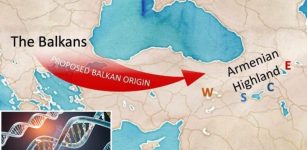 Armenians’ Origin Theory By Herodotus Debunked By New DNA Study
DNA | Nov 27, 2024
Armenians’ Origin Theory By Herodotus Debunked By New DNA Study
DNA | Nov 27, 2024 -
 Cartography Shows That The Isthmus Of Tehuantepec Was Used As An Inter-Oceanic Passage In The 16th Century
Archaeology | Oct 21, 2022
Cartography Shows That The Isthmus Of Tehuantepec Was Used As An Inter-Oceanic Passage In The 16th Century
Archaeology | Oct 21, 2022 -
 3D Scans Used To Study Mysterious Roman Burial Practice
Archaeology | Jun 5, 2023
3D Scans Used To Study Mysterious Roman Burial Practice
Archaeology | Jun 5, 2023 -
 European Bronze Age Treasure Of Villenna Has Artifacts Made Of Meteoric Iron
Archaeology | Feb 12, 2024
European Bronze Age Treasure Of Villenna Has Artifacts Made Of Meteoric Iron
Archaeology | Feb 12, 2024 -
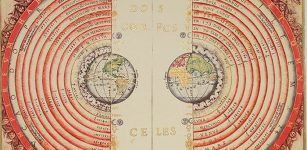 How Did Ancient Civilizations Make Sense Of The Cosmos And What Did They Get Right?
Civilizations | Mar 7, 2022
How Did Ancient Civilizations Make Sense Of The Cosmos And What Did They Get Right?
Civilizations | Mar 7, 2022 -
 Extremely Rare 2,700-Year-Old Black Stone Seal Depicting A Winged Genie Discovered In Jerusalem
Archaeology | Sep 2, 2024
Extremely Rare 2,700-Year-Old Black Stone Seal Depicting A Winged Genie Discovered In Jerusalem
Archaeology | Sep 2, 2024 -
 Mystery Of The Stone Of Destiny Solved – It Was Originally A Doorstep!
Archaeology | May 2, 2024
Mystery Of The Stone Of Destiny Solved – It Was Originally A Doorstep!
Archaeology | May 2, 2024 -
 Ancient City Of Tenea Built By Trojan Prisoners Reveals More Archaeological Secrets
Archaeology | Feb 15, 2023
Ancient City Of Tenea Built By Trojan Prisoners Reveals More Archaeological Secrets
Archaeology | Feb 15, 2023 -
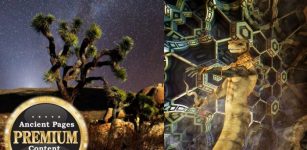 Mysterious Ancient African Sky Fathers
African Mythology | Jun 18, 2019
Mysterious Ancient African Sky Fathers
African Mythology | Jun 18, 2019 -
 Was Hygiene Important For Our Ancestors?
Featured Stories | Feb 11, 2017
Was Hygiene Important For Our Ancestors?
Featured Stories | Feb 11, 2017 -
 What Is The Meaning Of Ankh – Ancient Egyptian Symbol
Ancient Symbols | Sep 21, 2023
What Is The Meaning Of Ankh – Ancient Egyptian Symbol
Ancient Symbols | Sep 21, 2023 -
 10 Great Ancient Mysteries Of North America
Featured Stories | Sep 30, 2015
10 Great Ancient Mysteries Of North America
Featured Stories | Sep 30, 2015 -
 Odd Ancient Dwellings Of The Snake People – Clues From Biblical Lands – Part 2
Ancient Mysteries | Sep 10, 2020
Odd Ancient Dwellings Of The Snake People – Clues From Biblical Lands – Part 2
Ancient Mysteries | Sep 10, 2020 -
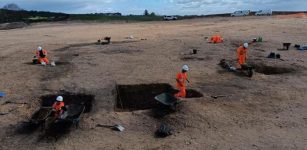 Why Was The Iron Age Village Near Elgin In Scotland Suddenly Abandoned And Burned Down?
Archaeology | Jul 29, 2022
Why Was The Iron Age Village Near Elgin In Scotland Suddenly Abandoned And Burned Down?
Archaeology | Jul 29, 2022 -
 Medieval Paradise Cockaigne – Land Of Extreme Pleasure And Luxury
Featured Stories | Dec 12, 2018
Medieval Paradise Cockaigne – Land Of Extreme Pleasure And Luxury
Featured Stories | Dec 12, 2018 -
 Clapping To Show Appreciation Is An Ancient And Widespread Behavior
Ancient History Facts | May 16, 2016
Clapping To Show Appreciation Is An Ancient And Widespread Behavior
Ancient History Facts | May 16, 2016



